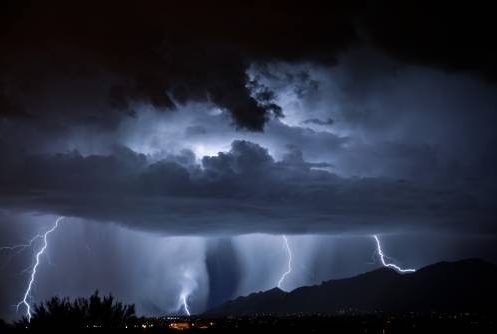When most people worry about storm damage, they focus on their windows and their roof. However, the reality is that your air conditioner can be harmed by a storm, too. Both the inside and the outside portions of your AC can be hurt after a serious storm. If a major storm passes over your region, pay close attention to your AC. These signs may tell you that your system was damaged.
Your AC Won’t Turn on
Of course, an air conditioner that will not turn back on after a storm is one of the most obvious signs that your system was harmed. However, it might not be as concerning as you think it is. When there are blackouts due to a storm, power surges have the potential to damage electronics. To keep a power surge from harming your pricey AC unit, there is typically a circuit breaker installed that will flip as soon as the power surges. In many cases, you just need to reset the circuit breaker, and then your AC will work just fine.
Insulation or Dust Coming Through Vents
If you notice insulation or dust being blown into your home, it means there is a problem with your ductwork. During a storm, any roof damage can lead to duct leaks. Furthermore, high pressure and strong winds can disrupt ductwork and cause cracks at spots where ducts join together. Any sort of leak is a bad thing because it allows your cold air to escape and reduces your system efficiency. It can also harm your air quality because it pulls in dirty air from your attic.
Higher Than Usual Electric Bills and Longer AC Run Times
In the days after the storm, keep a close eye on how long your AC is running. Many damaged AC systems will appear to function normally, but the reduced cooling efficiency will mean it takes longer to cool the house. A wide variety of issues, including a broken motor, refrigerant leaks or clogged coils, will mean your AC might run all day and night. If your system is only slightly damaged, you might not notice an issue for a while. However, your electric bill can provide more insight. If your bill is abnormally high, it’s often a sign that your AC is sucking up more power to keep your home cool.
Weird Sounds From the Outside Unit
A common danger during storms is debris flying around. Things like tiny sticks, trash or leaves can end up wedged in your outdoor unit. These might not keep your machine from running at first, but they can result in overheating. Typically, weird rattling, buzzing or screeching noises are a sign there is something inside your AC unit. You can check to see if there is any visible debris, but in some cases, you might need a professional to open up the unit and remove obstructions.
Burning Smells When You Run the AC
There are all sorts of electrical components that can be harmed by flying debris, falling walls or rising flood waters. When you first turn your AC back on after the storm, take the time to consider how the air smells. Any burning scent is a big cause for concern. You should not keep running your AC, since that could cause more damage or even result in a fire. Instead, turn off the AC and wait until a professional can come examine your system.
Water Puddles Around Your Unit
As soon as the storm starts to lighten, go outside to inspect your unit. The outdoor part of a system is supposed to be resistant to water. However, a few hours of being submerged can still cause problems. If there is enough water sitting around to cover the bottom of your unit, you should get the system inspected. Water around the indoor part of your unit is also concerning. This is typically a sign of either a broken drain or a frozen evaporator coil. You will need to address the problem promptly because the added moisture can damage both your home and your AC unit.
If you suspect you have storm damage, don’t hesitate to call Healthy Home Heating & Cooling LLC. Our team of experts can assess your AC system, identify potential problems and suggest effective repairs. In addition to AC repair, we also help De Pere residents with AC installation, AC maintenance, and comprehensive heating services, too.

